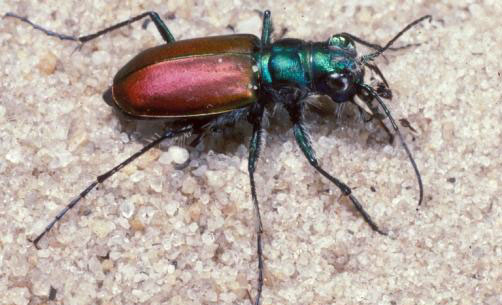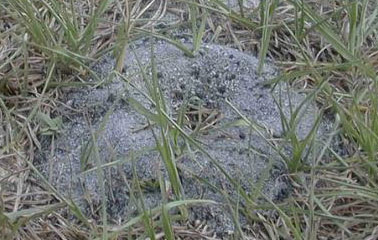Gardening: It’s Not Necessary To Kill Every Insect
May 21, 2011
 Many people think “the only good bug is a dead bug.” Their typical treatment strategy is to “nuke” the lawn using a broad-spectrum insecticide and kill every insect in sight. Unfortunately, this strategy could be making your problems worse.
Many people think “the only good bug is a dead bug.” Their typical treatment strategy is to “nuke” the lawn using a broad-spectrum insecticide and kill every insect in sight. Unfortunately, this strategy could be making your problems worse.
There are documented cases of outbreaks of Southern chinch bugs on heavily insecticide treated lawns, but not on neighboring untreated lawns. Why? Because healthy lawns are inhabited by a multitude of beneficial insects, spiders, and other small invertebrates that feed on plant debris, fungi, and other insects.
Almost all turfgrass pests have one or more natural enemies that can be important in suppressing their population.
In order to have a healthy and successful lawn, learn to use an integrated pest management (IPM) strategy. IPM is the combined use of cultural, biological and chemical methods for effective, economical pest control with little risk to human health or the environment.
To practice IPM, it’s imperative to know which insects are helpful, harmful or harmless.
 Ground beetles
Ground beetles
There are many species of predatory ground beetles. Some are rather ferocious looking, resulting in some very worried homeowners. These beetles can range in size from ¼ – 1½ inches and can be black or multicolored. Their antennae are inserted between the eyes. Ground beetles usually are very quick moving and can “seek and destroy” their prey. These insects can be very helpful in controlling a pest insect population.
Spiders
While they are not insects, spiders are surprisingly common and active in grass areas and are very efficient predators. Many species of spiders are beneficial in the garden or lawn, feeding on a wide range of immature insects and mites.
 Ants
Ants
Some species of ants are carnivorous, seeking out insects and other soft bodied organisms with which to provision the nest. In addition, ant activity often can help in the general breakdown of organic matter and the formation of soil.
Pyramid ants are beneficial ants that nest in sandy soils. Their nests have a single entrance that is surrounded by a crater shaped mound. These pale orange to dark brown slender ants are only about 1/8 inch in length. They are not aggressive and typically will not sting people. They are considered beneficial because they eat pest insects.
Centipedes and Millipedes
Centipedes and millipedes are commonly seen in yards and occasionally enter homes. Neither centipedes nor millipedes damage furnishings, home, or food. Their only importance is that of annoying or frightening individuals.
Final Thoughts
Keep in mind that pest insects are only one of many potential causes for thin or brown grass. Diseases, nematodes, drought, and nutritional disorders can also be damaging. Correct identification of the problem can save money and prevent unnecessary pesticide applications.
Beneficial insects are very sensitive to insecticides, so whenever a general insecticide is applied to control a pest species, the material will usually have a detrimental effect on the beneficial organisms. Consider using alternate methods of pest management, biological control agents (if available and suitable) or providing optimum cultural conditions so that the lawn can tolerate higher levels of pest activity without visible loss of vigor. If an insecticide application is deemed necessary, make spot treatments rather than broad scale applications if at all possible.



Comments